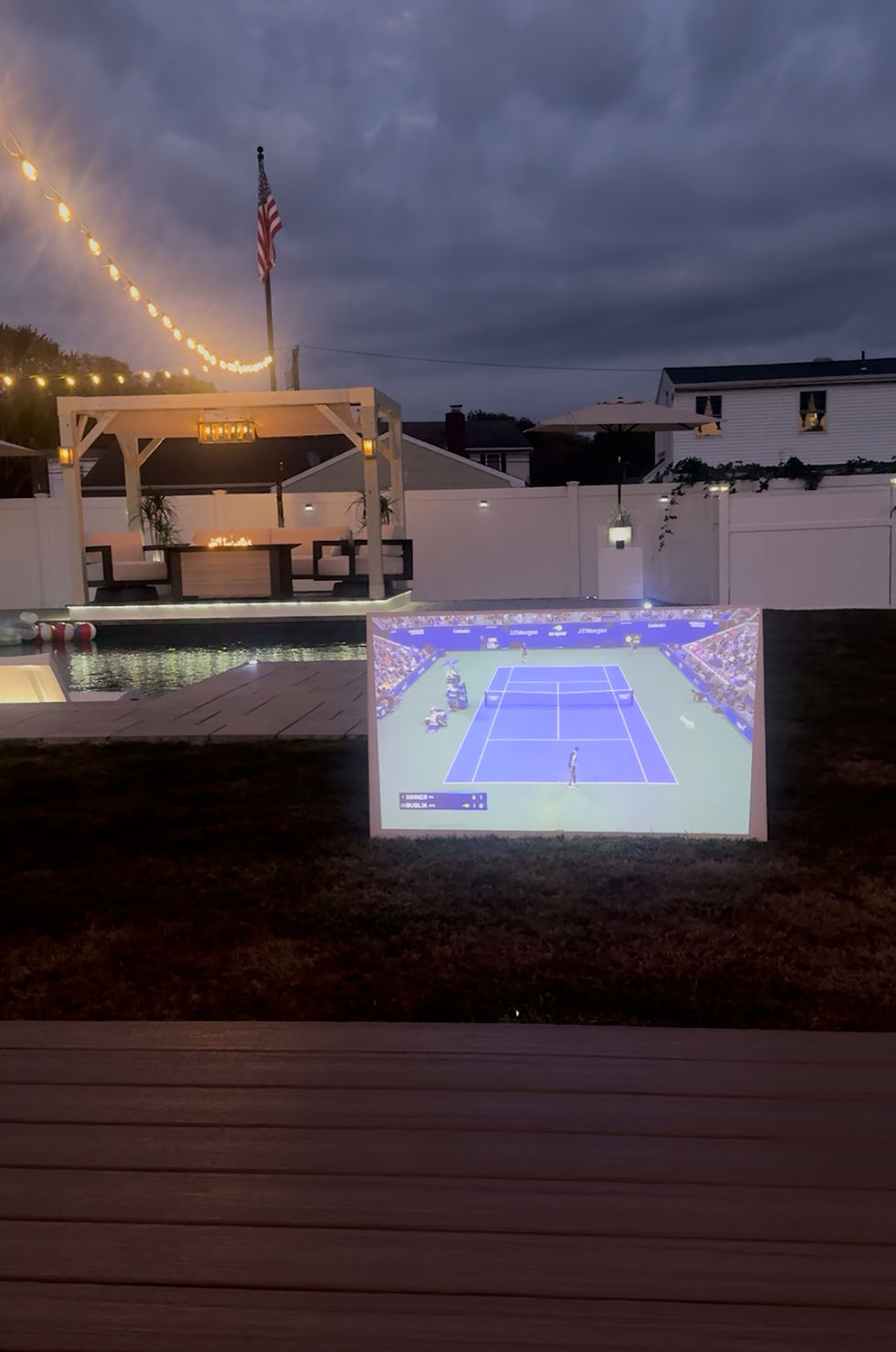Kids' Size Outdoor Lounger: A Step-By-Step Guide
- Mark Cisek
- Oct 16
- 4 min read

Skill Level: Intermediate
Overview:
A kids’ size outdoor lounger lets the little ones feel apart of the action. It’s a smaller version of a full-size lounger, built sturdy and low to the ground so it’s safe and comfortable. Perfect as a gift or for poolside, patios, or backyard hangouts, it gives kids their own spot to relax right next to everyone else.
Choosing Your Materials:
Cedar is an ideal choice for this project because it is naturally rot resistant, lightweight, and easy to work with. It performs well outdoors and stays stable through heat, rain, and humidity. Finish the wood with a waterproofing exterior stain to highlight the grain and add protection. Use exterior grade screws to prevent rust and stainless steel hinges for the backrest connection. These materials keep the lounger strong, weather ready, and safe for long term outdoor use.
Materials List:

Step 1: Build Your Frame
Start by cutting two 5/4" cedar boards to 57 inches long, each with 45-degree angles on both ends. Then cut two more boards to 20.5 inches, also with 45-degree angles. Arrange the four boards into a rectangle and fasten the corners together with 2.5" exterior screws. This creates your outer frame and sets the foundation for the lounger’s structure.

Step 2: Build the Inner Frame
Cut one 5/4" cedar board to 36.25 inches long, then rip it into two 1x1 inch strips. These act as inner supports for the seat boards. Attach each strip along the inside of the long sides of your outer frame, starting flush at one end. Recess them 1.5 inches down from the top edge of the frame and secure with exterior screws.

Step 3: Add the Seat Bench
Cut six 5/4" cedar boards to 18.5 inches long. Lay them across the inner frame strips with even spacing between each board. Secure every board with 1 5/8" exterior screws. This forms the seat surface and locks the structure together.
Step 4: Add the Legs
Cut six 4x4s to 4 inches long for the legs. Attach the first four legs directly underneath the seat support strips, one in each corner and one centered along each long side. Secure them through the side of the frame into each leg. Then attach the remaining two legs at the remaining corners. Position every leg so the top sits 2.5 inches below the top edge of the frame for a consistent height.

Step 5: Build the Backrest
Cut one 5/4" cedar board to about 19 inches long, then rip it into three 1.5" strips. From those, cut two pieces to 18.25" with a 45-degree angle on one end, and cut the third piece to 18.25" with 45-degree angles on both ends. These boards will form the outer frame of the backrest.

Step 6: Build the Backrest (Continued)
Cut three 5/4" cedar boards to 15.25 inches long. Space them evenly inside the backrest frame you just built. Apply wood glue to the edges for added strength, then secure each board by screwing in from both the sides and the top.

Step 7: Build the Backrest Stand
Cut one 5/4" cedar board to 15.25 inches long and rip it into three 1.25" strips. From those, cut two pieces to 9 inches long. Round one end of each and drill a 1/4" hole centered on the rounded end. Assemble the three boards into a U-shaped frame, placing the two 9-inch pieces on the sides and the 15.25-inch piece between them across the ends. Secure with exterior screws and glue to complete the backrest stand.

Step 8: Add the Adjustment Brackets
Cut two adjustment brackets to 4.5 inches long. Attach one bracket to each of the 9-inch side boards of the stand, positioning them near the bottom on the underside. Secure with exterior screws. This finishes the backrest stand and allows the backrest to adjust to multiple positions.

Step 9: Add the L-Brackets
Widen one hole on each L-bracket to fit your bolt size. Attach an L-bracket to each side of the backrest, positioned 6.25 inches up from the bottom. Space the brackets 17.25 inches apart so the backrest stand fits snugly between them. Align the holes and secure the backrest stand to the brackets with bolts.

Step 10: Hinges and Eye Screws
Measure 1.75 inches in from each side of the backrest and attach the hinges along the top front edge. Secure the opposite side of each hinge to the bench platform, leaving about a half inch gap so the backrest can pivot freely. On the top edge of the backrest, measure 6 inches in from each side and install two eye screws. Tie a string between them to create a simple pull system that lets you lift the recessed backrest smoothly from the frame.

Step 11: Add the Support Bar
Measure 9 inches from the backrest side of the frame and 3.75 inches down from the top. Drill a 1/2-inch hole on each side and slide your support bar through (Support bar should be cut down to 19 1/8 inches). Then cut a 5/4" cedar board to 18.5 inches long and rip it to 1x1 inch. Attach this piece directly across the top of the two back legs. It serves as a support ledge for the backrest when laid flat.
Final Thoughts:
Since this lounger is a custom size, finding the right cushions took some searching. A three pack of furniture replacement cushions ended up fitting perfectly, leaving one extra cushion to spare. With the lounger measuring 57 inches in length, it comfortably fits kids from about age one through early teens, so it is not something they will outgrow quickly.
Built with all exterior materials, it is made to last for years on end. The only challenge after finishing one of these will be answering the question everyone asks next, where you got it and if you can make them one too.














Comments